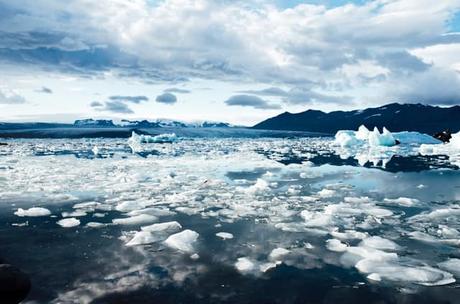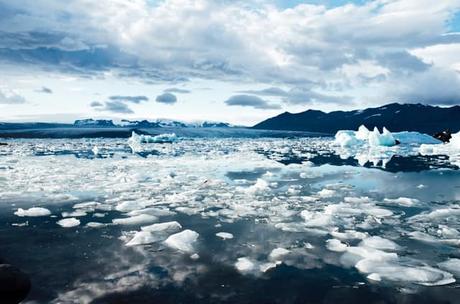Denman Canyon of East Antarctica, Earth’s deepest land gorge reaching 3,500m below sea-level and filled up with ice from top to bottom is significantly vulnerable to melting, US space agency (NASA) scientists reveal in a new report.
Its sections that are retreating and thinning suggest of being eroded by encroaching warm ocean water.

If the ice of Denman were hollowed out, it is the one to watch for the future, raising the global sea surface by 1.5m.
“How fast this can happen? Hard to say, since there are many factors coming into play, for example the narrowness of the channel along which Denman is retreating may slow down the retreat,” explained Dr Virginia Brancato, from Nasa’s Jet Propulsion Laboratory and a former scholar at the University of California at Irvine (UCI).
“At present, it is critical to collect more data, and closely and more frequently monitor the future evolution of the glacier,” she told BBC News.
In the Middle East, the shores around the Dead Sea are mostly known to have the lowest visible land surface elevation on Earth, which is around 430m below sea level. However, the base of the gorge occupied by Denman Glacier on the edge of the East Antarctic Ice Sheet (EAIS), reaches eight times as deep.
This recently established fact has made Denman a location of renewed scientific interest.
Dr Brancato and colleagues showed a marked retreat in the glacier’s grounding line with the help of satellite radar data from 1996 to 2018. At this point, the ice stream lifts up and floats as it flows off the land and enters the ocean.
In the last 22 years, the line has reversed 5-6km.
The interesting part about this reversal is that it’s asymmetric; pretty much everything is occurring on the western side of the glacier.
It is due to a buried ridge under the eastern flank, which is pinning and protecting that side of the glacier, the scientists can now determine. But the western flank features a narrow but sizeable trough allowing warm ocean water to erode the grounding line and push it backward.
It potentially is an Achilles heel. The further the glacier reaches the inland; the bed becomes deeper. It’s a geometry that has been demonstrated in favor of more and more melting. If warm ocean water in a substantial amount can find its way to the front of Denman, its ice can melt out in a significant way.
In Antarctica, most of the ice loss is occurring in the west of the continent. While in East Antarctica, glaciers have been thought of as stable, as being quiescent. However, only relatively few ice streams have been marked out for special attention.
Totten Glacier is key among these. It is a colossus that is thinning at a rate of about half a meter a year. But Prof Eric Rignot, NASA and UCI researcher, believes probably the more vulnerable of the two right now is Denman.
He told BBC News: “I think in terms of the geometry, Denman is more of an Achilles heel than Totten, because it has this deep trough with a retrograde slope that is sort of a perfect crime in the making – as opposed to Totten which has 50km on a prograde slope, of a bed going uphill, before you get into the very deep stuff.”
Currently, better information is lacking about the movement of warm water coming from the deep ocean. In the West Antarctic Ice Sheet (WAIS), there are clear paths for warm water reaching the continental shelf and attack glaciers.
For Denman, the simplest, best way to explain the observations is that this is a supposition at present.
The instruments mounted on seals that have dived in the area provided some insightful data. Though the information from marine mammal points to routes warm water could take, the investigations need to be much more extensive.
Dr Emma Smith, recently of the Alfred Wegener Institute in Germany, commented: “We need to make more observations beneath the ice shelves and margins of East Antarctica.
“The glaciology community assumed for some time the EAIS was relatively stable compared to WAIS and didn’t worry about it too much. Now that view is slowly shifting as we start to see the vulnerability of certain areas of the EAIS and understand more about the ice-ocean interactions in these areas.”
The assessment of Denman Glacier by the Nasa-UCI-led team is published in the American Geophysical Union journal Geophysical Research Letters.


